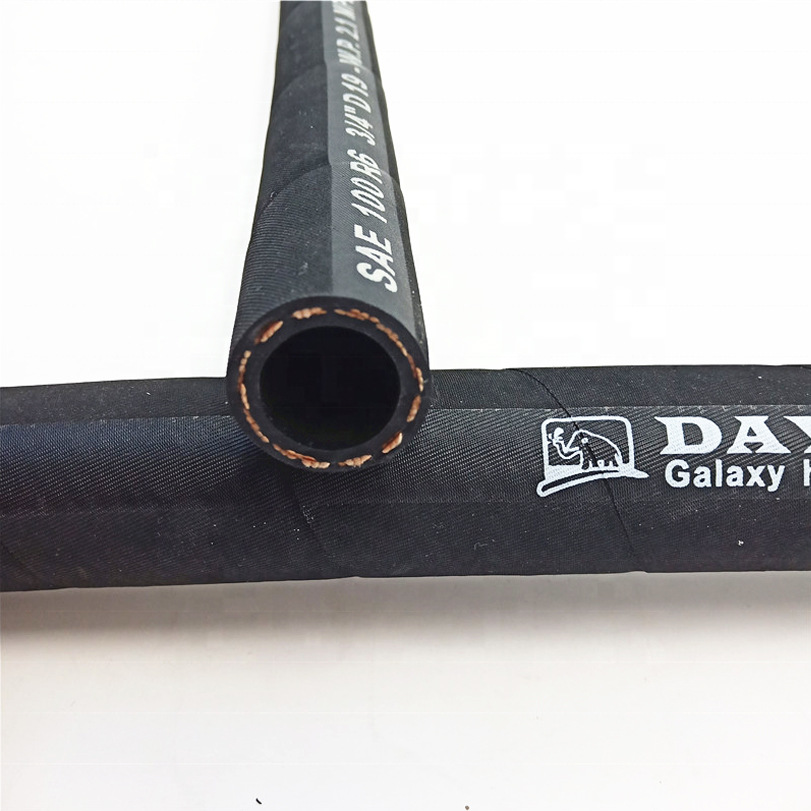335345435
Nov . 01, 2024 09:30 Back to list
Flexible Low Pressure Hose for Efficient Fluid Transfer Solutions
Understanding Low Pressure Hose Applications, Types, and Benefits
Low pressure hoses are crucial components in a variety of industrial, agricultural, and automotive applications. They facilitate the safe and efficient transport of fluids and gases at lower pressure levels. Understanding the significance and proper use of low pressure hoses is essential for anyone involved in industries that rely on fluid transfer systems.
Applications of Low Pressure Hoses
Low pressure hoses are commonly used in numerous sectors. In the agricultural industry, they are essential for irrigation systems, where they transport water from one point to another, ensuring that crops receive adequate moisture. In automotive applications, they transfer fuel and coolant within vehicles, helping maintain optimal engine performance and efficiency. Additionally, low pressure hoses are prevalent in construction, connecting machines and equipment to facilitate the movement of hydraulic fluids.
Types of Low Pressure Hoses
There are several types of low pressure hoses, each designed for specific applications. For instance, rubber hoses are widely used due to their flexibility and durability. These hoses can withstand various environmental conditions, making them suitable for outdoor use. PVC hoses, on the other hand, are lightweight and resistant to abrasions and chemicals, making them ideal for applications requiring higher chemical resistance.
Another popular type is the fabric-reinforced hose, which incorporates textiles for added strength. This type of hose is often used in applications where the hose may experience bending and flexing. Moreover, silicone hoses are known for their high-temperature resistance, making them suitable for automotive uses where excessive heat is generated.
low pressure hose

Benefits of Using Low Pressure Hoses
One of the main advantages of low pressure hoses is their versatility. They can be used in various applications while ensuring compatibility with different fluids and gases. Furthermore, low pressure hoses are typically lighter than high-pressure alternatives, making them easier to handle and install. This is particularly beneficial in manual operations, reducing the risk of worker fatigue and enhancing productivity.
Safety is another significant benefit. Low pressure hoses are less prone to catastrophic failures compared to high-pressure hoses, which can lead to severe accidents and injuries. Using low pressure hoses in the appropriate applications minimizes such risks while maintaining effective fluid transfer.
Choosing the Right Low Pressure Hose
Selecting the right low pressure hose involves considering several factors, including the type of fluid being transported, the operating temperature, and the hose's bend radius. It is essential to ensure that the chosen hose meets the specific requirements of the application to guarantee optimal performance and safety.
In conclusion, low pressure hoses are invaluable tools across numerous industries, playing a crucial role in fluid transportation and ensuring efficient operations. By understanding their types, applications, and benefits, users can make informed decisions that enhance the effectiveness and safety of their systems. Whether in agriculture, automotive, or construction, low pressure hoses exemplify the importance of proper equipment in achieving operational excellence.
-
High-Quality Distribution PTFE Hose for Industrial Flexibility
NewsJul.23,2025
-
Durable Pressure Washer Rubber Hose for Hot Water & High Flexibility
NewsJul.22,2025
-
Twin Hydraulic Hose for Efficient Fluid Transfer | Durable & Flexible
NewsJul.22,2025
-
Twin Hydraulic Hose | High Pressure & Durable
NewsJul.21,2025
-
Discount Hydraulic Hose Factories | Top Quality & Discounts
NewsJul.20,2025
-
EN856 4SP Hydraulic Hose - High Pressure & Durable
NewsJul.20,2025



